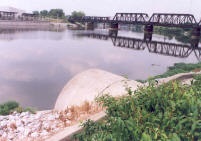 Yes. Check your downspouts and foundation drains to make sure they are not connected to the sanitary sewer. These outdated connections, common in homes built prior to 1963, add excess water to the system during rain events. For a brochure on how to disconnect downspouts, please call (614) 645-2926.
Yes. Check your downspouts and foundation drains to make sure they are not connected to the sanitary sewer. These outdated connections, common in homes built prior to 1963, add excess water to the system during rain events. For a brochure on how to disconnect downspouts, please call (614) 645-2926.
Disposing of grease properly is also important as grease can block city and homeowner pipes, causing overflows and backups. Do not pour grease into sinks and drains. Place grease in the trash after it cools in a sealed container such as a coffee can. Also, make needed repairs on your home sewer line to prevent excess water from entering the system through cracks (often caused by tree roots).